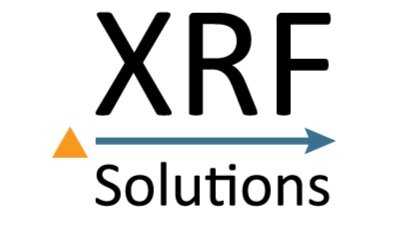XRF Technology
WHAT IS X-RAY FLUORESCENCE?
XRF is a diagnostic non-destructive testing technique that can be used to detect and measure the concentration of elements in a substance. Fluorescence is the result of electrons of a particular element being ejected by incoming radiation. The ejection causes electrons from higher energy orbitals to drop down and fill the void leading to a release of secondary X-Rays. The emitted X-Ray energies are different for each element. By analyzing secondary X-Ray spectra, one can determine what elements are present and their concentration in a given substance. The instrument scanning area is 1 cm in diameter and works best on flat, clean surfaces or cuttings in sample cups.
HOW IS XRF DIFFERENT FROM XRD?
X-Ray Diffraction uses X-Rays to determine the crystalline structure of a material (Bragg’s Law). The angle and intensity of the reflection provides a spectra based on arrangement of atoms, which can be used to estimate the presence and concentration of a given mineral. X-Ray Fluorescence is used to determine the elemental composition of a material.
HOW LONG DOES an XRF ANALYSES take?
Turnaround time for XRF projects are very quick, especially if a formation model has been established. Each sample is analyzed for approximately one minute . Once data are collected, initial chemical logs can be prepared within a few days.
WHERE CAN YOU DO XRF?
The portable XRF instrument can be used to collect data from samples almost anywhere, post-drilling or during drilling, without interfering with drilling operations. Analyses can be performed on drill cuttings, core, or outcrop samples. Archived samples can also be analyzed at the storage facility quickly, without the need for transport.
WHAT KIND OF INFORMATION WILL I GET FORM XRF?
XRF Solutions uses elemental data gathered by our instruments to create chemical logs, much like a wireline log. There are a variety different chemical logs available; these can be selected and tailored to your project. Some common logs developed are spectral gamma, mineralogy, TOC, porosity, permeability, grain size and mechanical properties.
how is an xrf model built?
The XRF model building process is dependent on lab and wireline data provided by the client. The process works best when models are created in vertical wells with extensive reference data. Once a model is developed, future vertical and horizontal wells can be chemically logged using only XRF data . Typical reference data used in the modeling process are wireline logs, XRD results, rock eval measurements, porosity/permeability values, Dean-Stark values, SEM images, production data and hydraulic fracture data.
WHAT INSTRUMENT IS USED?
XRF Solutions use Bruker Tracer 5G instruments for analyses. These instruments are portable and equipped to use vacuum purge. In this configuration we are able to capture elemental composition from Sodium to Uranium.
